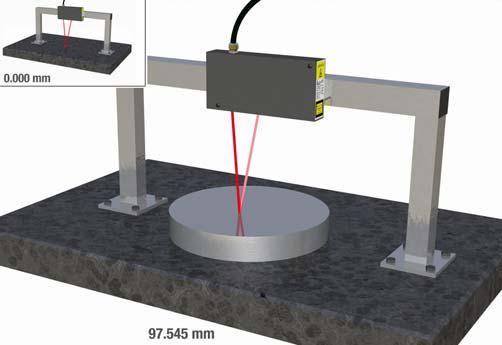Introduction to the Principle of Single Sensor Thickness and Width Measurement
2023-11-22
Laser measurement sensors are often used in industry and research to verify dimensions of length, width, or thickness. Typical applications include determining wood thickness, steel coil thickness, paper coil width, and so on. The reason why engineers choose non-contact laser sensors is that they are very accurate, fast, and the distance between the measuring device and the surface of the measured object can be very far.
Method of measuring object size
There are several methods for measuring the size of an object using non-contact sensors. The first method is to use a single device to measure the length, width, thickness, and other dimensions of an object placed on a stationary surface (usually referred to as a reference plane). If there is no reference, the laser sensor only needs to measure the distance of its target relative to the sensor, rather than the position on the opposite side. For objects or materials that are in motion or not in contact with the reference surface, engineers can use two sensors. Measure dimensions when an object passes between two sensors.
Single sensor method
When an object is stationary and in contact with a reference surface, size verification is relatively simple and direct. This is mostly the case for worktable tops and Quality Assurance tests using measuring fixtures. The selected sensor has sufficient measurement range to meet the maximum measurement size. Engineers install sensors directly opposite the reference surface. Subsequently, technicians use appropriate configuration settings or the equivalent "tare" function in their computer or controller to "zero" the sensor to the reference plane. Sensors can read the height (or thickness, width, etc.) of objects placed on their channels. The following figure demonstrates the measurement method of the single sensor mentioned above.




